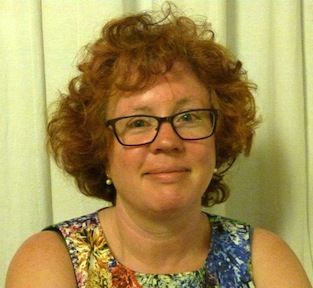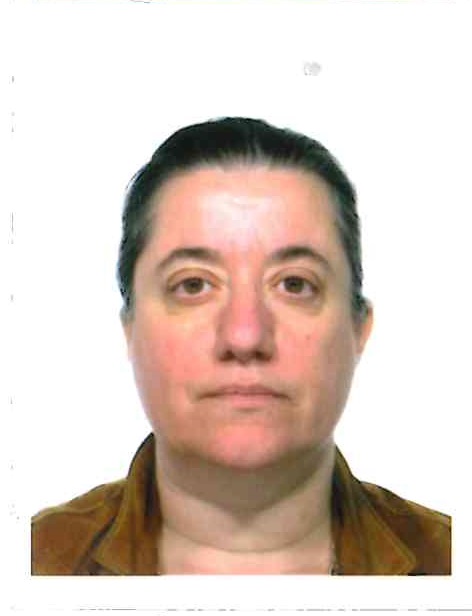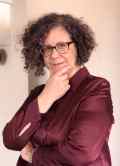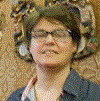Studying at the University of Verona
Here you can find information on the organisational aspects of the Programme, lecture timetables, learning activities and useful contact details for your time at the University, from enrolment to graduation.
Academic calendar
The academic calendar shows the deadlines and scheduled events that are relevant to students, teaching and technical-administrative staff of the University. Public holidays and University closures are also indicated. The academic year normally begins on 1 October each year and ends on 30 September of the following year.
Course calendar
The Academic Calendar sets out the degree programme lecture and exam timetables, as well as the relevant university closure dates..
| Period | From | To |
|---|---|---|
| I semestre | Oct 3, 2011 | Jan 14, 2012 |
| II semestre | Feb 27, 2012 | May 26, 2012 |
| II semestre - I PARTE | Feb 27, 2012 | Apr 14, 2012 |
| II semestre - II PARTE | Apr 16, 2012 | May 26, 2012 |
| Session | From | To |
|---|---|---|
| Sessione esami invernale | Jan 16, 2012 | Feb 25, 2012 |
| Sessione esami estiva | Jun 4, 2012 | Jul 21, 2012 |
| Sessione esami autunnale | Sep 3, 2012 | Sep 29, 2012 |
| Session | From | To |
|---|---|---|
| Sessione lauree autunnale | Nov 24, 2011 | Nov 26, 2011 |
| Sessione lauree invernale | Apr 2, 2012 | Apr 4, 2012 |
| Sessione lauree estiva | Jul 10, 2012 | Jul 13, 2012 |
| Period | From | To |
|---|---|---|
| Festa di Ognissanti | Nov 1, 2011 | Nov 1, 2011 |
| Festa dell'Immacolata Concezione | Dec 8, 2011 | Dec 8, 2011 |
| Vacanze di Natale | Dec 24, 2011 | Jan 8, 2012 |
| Vacanze di Pasqua | Apr 5, 2012 | Apr 10, 2012 |
| Festa della Liberazione | Apr 25, 2012 | Apr 25, 2012 |
| Festa del Lavoro | May 1, 2012 | May 1, 2012 |
| Festa del Santo Patrono di Verona S. Zeno | May 21, 2012 | May 21, 2012 |
| Festa della Repubblica | Jun 2, 2012 | Jun 2, 2012 |
Exam calendar
Exam dates and rounds are managed by the relevant Foreign Languages and Literatures Teaching and Student Services Unit.
To view all the exam sessions available, please use the Exam dashboard on ESSE3.
If you forgot your login details or have problems logging in, please contact the relevant IT HelpDesk, or check the login details recovery web page.
Should you have any doubts or questions, please check the Enrollment FAQs
Academic staff
Ambrosi Paola
 paola.ambrosi@univr.it
paola.ambrosi@univr.it
 +39 045 802 8466
+39 045 802 8466
 cecilia.grana@univr.it
cecilia.grana@univr.it

Ligas Pierluigi
 pierluigi.ligas@univr.it
pierluigi.ligas@univr.it
 +39 045 802 8408
+39 045 802 8408

Locher Elmar
 elmar.locher@univr.it
elmar.locher@univr.it
 +39 045802 8311
+39 045802 8311

Migliorati Lorenzo
 lorenzo.migliorati@univr.it
lorenzo.migliorati@univr.it
 045802 8135
045802 8135
 francesco.vecchiato@univr.it
francesco.vecchiato@univr.it

Zaccarello Michelangelo
 michelangelo.zaccarello@univr.it
michelangelo.zaccarello@univr.it
 +39 045 802 8330
+39 045 802 8330

Zanon Tobia
 tobia.zanon@univr.it
tobia.zanon@univr.it
Study Plan
The Study Plan includes all modules, teaching and learning activities that each student will need to undertake during their time at the University.
Please select your Study Plan based on your enrollment year.
1° Year
| Modules | Credits | TAF | SSD |
|---|
Prima lingua straniera anno ISeconda lingua straniera anno IPrima letteratura straniera anno ISeconda letteratura straniera anno I2° Year activated in the A.Y. 2012/2013
| Modules | Credits | TAF | SSD |
|---|
Urban, commercial and transportation geography
Prima lingua straniera anno IISeconda lingua straniera anno IIPrima letteratura straniera o materia d'area anno IISeconda letteratura straniera o materia d'area3° Year activated in the A.Y. 2013/2014
| Modules | Credits | TAF | SSD |
|---|
Prima lingua straniera anno IIISeconda lingua straniera anno III| Modules | Credits | TAF | SSD |
|---|
Prima lingua straniera anno ISeconda lingua straniera anno IPrima letteratura straniera anno ISeconda letteratura straniera anno I| Modules | Credits | TAF | SSD |
|---|
Urban, commercial and transportation geography
Prima lingua straniera anno IISeconda lingua straniera anno IIPrima letteratura straniera o materia d'area anno IISeconda letteratura straniera o materia d'area| Modules | Credits | TAF | SSD |
|---|
Prima lingua straniera anno IIISeconda lingua straniera anno III| Modules | Credits | TAF | SSD |
|---|
Legend | Type of training activity (TTA)
TAF (Type of Educational Activity) All courses and activities are classified into different types of educational activities, indicated by a letter.
English II [CInt] (2012/2013)
Teaching code
4S00850
Teacher
Coordinator
Credits
9
Language
Italian
Scientific Disciplinary Sector (SSD)
L-LIN/12 - LANGUAGE AND TRANSLATION - ENGLISH
Period
II semestre dal Feb 25, 2013 al May 31, 2013.
Learning outcomes
The Building Blocks of Language: Syntax and Semantics
Teaching Aims
The course aim is to provide an introduction to the study of the English language from a syntactic and semantic perspective.
Program
The main topics covered will be:
Syntax:
- The Building Blocks of Language: Words, Word Classes and Phrases
- Clauses and Sentences (both Simple and Complex)
- Predicates, Arguments and Thematic Roles
The Information structure of the English Sentence:
- Given and New Information (topic and focus);
- Variation in the Structure of the Sentence (fronting, inversion, cleft sentences, extraposition, existential sentences)
Lexical Semantics:
- The Structure of the English Lexicon;
- Currently available Lexicographic Resources for the Study of the English Lexicon;
- Levels of Meaning;
- Main Sense Relations (syntagmatic, paradigmatic)
- The representation of Meaning: Componential Analysis, Semantic Fields, Prototype Theory, Frame Semantics
Reading List:
Aarts, Bas (2001) English Syntax and Argumentation, 2nd edition, London, Palgrave Macmillan
*Crystal, David (1995) The Cambridge Encyclopaedia of the English Language, Cambridge, Cambridge University Press (Ch. 8 - The Nature of the Lexicon: 117-123; Ch. 9 – The Sources of the Lexicon: 124-135; Ch. 11- The Structure of the Lexicon: 156-169)
*Fillmore, Charles and Beryl T. Atkins (1992) "Toward a Frame-Based Lexicon: The Semantics of RISK and its Neighbors" in Adrienne Lehrer and Eva Feder Kittay (eds.) Frames, Fields and Contrasts, Hillsdale, N.J., Lawrence Erlbaum Associates: 75-102
*Jeffries, Lesley (2006) Discovering Language. The Structure of Modern English, London, Palgrave (Ch. 6; 7.5-7.8)
*Petruck, Miriam (1996) “Frame Semantics” in Jef Verschueren, Jan-Ola Östman, Jan Blommaert, and Chris Bulcaen (eds.). Handbook of Pragmatics, Philadelphia, PA: John Benjamins.
Texts marked by * will be a available at a copy shop near the University, starting from the beginning of the course.
Advanced and Optional:
Violi, Patrizia (1996) Significato ed Esperienza, Milano, Bompiani
Saeed, John I. (2003) Semantics, London, Blackwell
Additional bibliographic references will be indicated during the course. Class presentations will be made available on-line during the course.
Grammar Textbooks:
Biber, Douglas, Susan Conrad and Geoffrey Leech (2002) Longman Student Grammar of Spoken and Written English, London, Longman
Dictionaries:
- Collins Cobuild English Language Dictionary for Advanced Learners, 2nd Edition, Collins
- Merriam Webster English Dictionary
- Hoepli Advanced Learner’s Dictionary Inglese-Italiano/Italiano-Inglese (2008), Milano, Hoepli
-Grande Dizionario Inglese Hazon Garzanti, nuova edizione 2008, Milano, Garzanti
Examination Methods
Two options:
a) two intermediate tests for attending students (80% attendance to class is required). The mark of both tests will have to be 18/30 or higher. In case of failure in one of the two, it will be possible to sit for the exam (see b)) in June or July (only the Summer session) and take only the relative part of the exam.
b) a final written test including open questions, exercises and analyses. The test will last 2 hours and will be in English.
Students may sit for the exam, starting from the first summer session (June-July). The final mark is comprehensive of the CLA Certification and will be registered after completing the various parts in the exam.
Prerequisites: Lingua Inglese 1 (English Language 1); English B2 level.
Final Remarks: students are advised to check the course homepage regularly for an updated version of the program.
Type D and Type F activities
To discover all the teaching activities accredited by the foreign teaching college click here
Career prospects
Module/Programme news
News for students
There you will find information, resources and services useful during your time at the University (Student’s exam record, your study plan on ESSE3, Distance Learning courses, university email account, office forms, administrative procedures, etc.). You can log into MyUnivr with your GIA login details: only in this way will you be able to receive notification of all the notices from your teachers and your secretariat via email and soon also via the Univr app.
Student login and resources
Gestione carriere
Assegnazione tutore
Attività accreditate D/F
Calendario didattico dettagliato
Cambio lingua curriculare
Competenze informatiche
Competenze linguistiche (prima e seconda lingua)
Competenze linguistiche in triennale (terza lingua CFU F)
Compilazione del piano didattico
Corso di Lingua portoghese
Erasmus+ e altre esperienze all'estero
Linguistic training CLA
Presentazione dei corsi di studio e Open day
Graduation
List of theses and work experience proposals
| Stage | Research area |
|---|---|
| PROGETTO MAMBRINO Stage per bibliografia | Various topics |
Saperi minimi
Stage e tirocini
Nel piano didattico della laurea triennale in Lingue per il turismo e il commercio internazionale (L12) è previsto un periodo di stage obbligatorio (CFU 6) in organizzazioni imprenditoriali.
Le attività di stage sono finalizzate a far acquisire allo studente una conoscenza diretta in settori di particolare interesse per l’inserimento nel mondo del lavoro e per l’acquisizione di abilità professionali specifiche.
Le attività di stage sono svolte sotto la diretta responsabilità di un singolo docente presso studi professionali, enti della pubblica amministrazione, aziende accreditate dall’Ateneo veronese.
I crediti maturati in seguito ad attività di stage saranno attribuiti secondo quanto disposto nel dettaglio dal “Regolamento d’Ateneo per il riconoscimento dei crediti maturati negli stage universitari” vigente.
- Tutte le informazioni in merito agli stage per futuri studenti sono disponibili alla pagina Stage e tirocini.
- Tutte le informazioni in merito agli stage per studenti iscritti sono pubblicate in MyUnivr - come fare per - stage e tirocini.
- Tutte le informazioni in merito agli stage per le aziende sono disponili alla pagina Stage e tirocini per azienze.
Ulteriori informazioni al seguente link https://www.univr.it/it/i-nostri-servizi/gestione-carriere-studenti-lingue-e-letterature-straniere/stage-e-tirocini-lingue-e-letterature-straniere










































